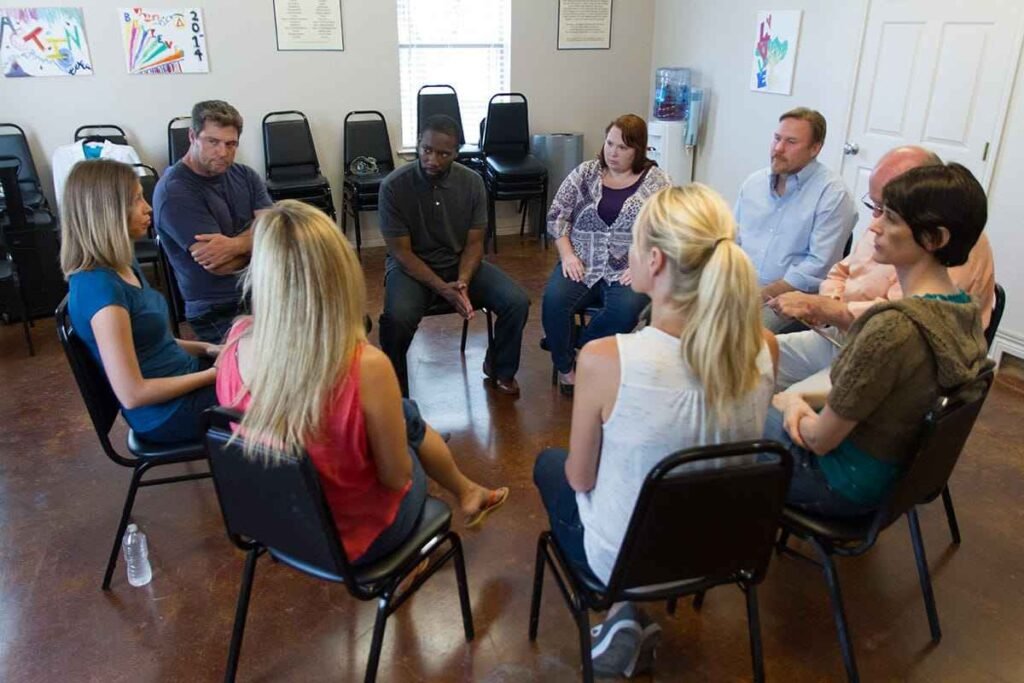Embarking on the journey of how to start a recovery house with the right steps, establishing a recovery house requires careful planning, dedication, and a commitment to ethical and effective practices. we will explore the essential steps and considerations involved in starting a recovery house to ensure its success in serving individuals on their path to recovery.
The goal of how to start a recovery house with the right steps is to provide a supportive environment that promotes healing, growth, and lasting sobriety, in addition to offering a physical place for people to live. Motivated by individual encounters, a strong desire to assist others, or a need to bridge a gap in available community services.
Understanding the unique requirements of the community you want to serve is essential before getting into the specifics of how to start a recovery house with the right steps. Finding out about local drug misuse rates, treatment alternatives, and service gaps through in-depth research and data collection can give you important information about the need for recovery homes in your community. Speaking with experts in addiction, medical professionals, and neighborhood organizations can provide insightful viewpoints on the difficulties and possibilities facing the field of addiction recovery.
Read Also: IIFL Mortgage Loan Login| Access &Manage Your Account
What is a Recovery House?

A recovery house, also commonly known as a sober living home, is a transitional living environment designed to support individuals recovering from addiction, substance abuse, or other related issues. These homes provide a structured and supportive environment where individuals can continue their journey of recovery after completing a primary treatment program such as rehab or detoxification.
In addition to providing a stable and supportive living environment, recovery houses may also offer various services and resources to residents, such as counseling, life skills training, vocational assistance, and peer support. The goal is to help individuals transition back into mainstream society while maintaining their sobriety and learning essential skills for long-term recovery. Keep reading to understand how to start a recovery house with the right steps.
Read Also: 10 Best Volunteer Opportunities at a Soup Kitchen
Benefits of Recovery House
Recovery houses, also known as sober living homes or halfway houses, offer numerous benefits to individuals recovering from addiction or other issues related to mental health. Some of the key benefits include:
- Structured Environment: Recovery houses provide a structured and supportive environment conducive to sobriety. They often have rules and regulations that residents must follow, which can help individuals establish routine and discipline in their lives.
- Peer Support: Living in a recovery house allows individuals to be surrounded by peers who are also in recovery. This peer support system can be invaluable in providing encouragement, understanding, and accountability during the recovery process.
- Safe and Drug-Free Environment: Recovery houses offer a safe and drug-free living environment where residents can focus on their recovery without the temptations and triggers present in their previous environments.
- Transitional Support: For individuals transitioning from inpatient treatment or detox programs to independent living, recovery houses serve as a bridge between intensive treatment and returning to mainstream society. They provide a supportive stepping stone as individuals adjust to life outside of a controlled treatment environment.
- Access to Resources: Many recovery houses offer access to resources such as counseling, therapy, support group meetings, job assistance, and educational opportunities. These resources can help individuals address underlying issues contributing to their addiction and build skills necessary for long-term recovery.
- Continued Recovery Support: Recovery houses often have staff or house managers who are trained to provide support and guidance to residents. This ongoing support can help individuals navigate challenges, cope with cravings, and prevent relapse.
- Accountability: Residents of recovery houses are typically required to adhere to house rules, such as maintaining sobriety, participating in household chores, and attending support meetings. This accountability helps individuals stay on track with their recovery goals and fosters a sense of responsibility.
- Community Integration: Living in a recovery house allows individuals to gradually reintegrate into the community while still having a supportive network around them. This can help reduce feelings of isolation and loneliness often experienced during the early stages of recovery.
Read Also: Fully-Funded Commonwealth Masters Scholarships in the UK 2024
Every successful recovery house is built upon a clear mission and vision that guide its operations and values. Take the time to articulate your overarching goals, principles, and philosophy regarding how to start a recovery house with the right steps
Consider the population you intend to serve, whether it’s individuals struggling with addiction to alcohol, drugs, or both, as well as any specific demographic or cultural considerations. Your mission and vision of how to start a recovery house with the right steps will serve as the foundation upon which you’ll build your recovery house and will help attract like-minded individuals and supporters to your cause.
Read Also: MacEwan University Student Portal 2024
How to Start a Recovery House with the Right Steps

Here’s a guide on how to start a recovery house with the right steps:
- Understand the Purpose: Before diving into the logistics, it’s crucial to grasp the purpose of a recovery house. These homes provide a supportive environment for individuals recovering from addiction by offering a drug and alcohol-free living space combined with peer support and accountability.
- Research and Planning: Conduct thorough research on local regulations, zoning laws, and licensing requirements for operating a recovery house in your area. Create a comprehensive business plan outlining your goals, target demographic, services offered, and financial projections. Consider seeking advice from professionals experienced in addiction recovery or housing regulations.
- Secure Funding: Establishing a recovery house requires financial resources for property acquisition or lease, renovations, utilities, staffing, and ongoing operational expenses. Explore funding options such as grants, loans, private investors, or partnerships with local organizations or treatment facilities.
- Choose the Right Location: Selecting the right location is critical for the success of your recovery house. Look for properties in safe neighborhoods with easy access to public transportation, employment opportunities, and support services like counseling, healthcare, and 12-step meetings.
- Ensure Legal Compliance: Obtain any necessary permits, licenses, or certifications required by local authorities to operate a recovery house legally. Compliance with building codes, health and safety regulations, and fair housing laws is essential to avoid legal issues in the future.
- Develop Policies and Procedures: Establish clear rules, guidelines, and expectations for residents regarding sobriety, curfew, chores, visitor policies, and conflict resolution. Create a structured environment that promotes accountability, personal responsibility, and mutual respect among residents.
- Hire Qualified Staff: Recruit staff members who are experienced in addiction recovery, counseling, or social work and possess the empathy and dedication needed to support residents on their journey to sobriety. Provide adequate training on crisis intervention, relapse prevention, and resident support strategies.
- Foster a Supportive Community: Cultivate a supportive community within the recovery house by organizing group activities, peer support meetings, life skills workshops, and recreational outings. Encourage residents to participate in recovery-focused programs and engage in positive social interactions with their peers.
- Implement Ongoing Evaluation and Improvement: Continuously evaluate the effectiveness of your recovery house program and make necessary adjustments based on feedback from residents, staff, and stakeholders. Monitor outcomes such as sobriety rates, resident satisfaction, and successful reintegration into society to measure the impact of your efforts.
- Complete the Recovery Residence Registry Application, F-02706: How to start a recovery house with the right steps requires careful planning, dedication, and a commitment to supporting individuals in their recovery from addiction. By following these steps and staying true to the mission of providing a safe and supportive environment, you can make a meaningful difference in the lives of those seeking to rebuild their lives free from substance abuse.
- Collaborate with Local Resources: Forge partnerships with local addiction treatment centers, healthcare providers, employment agencies, faith-based organizations, and community support groups to enhance the resources available to residents and facilities
Read Also: InstaMed Provider Portal login-Online.Instamed.com
- Who can benefit from living in a recovery house?
Individuals who have completed a substance abuse treatment program, such as detoxification or rehabilitation, often find recovery houses beneficial. It can also be helpful for those who need additional support in maintaining their sobriety and reintegrating into daily life. - What services are typically offered in a recovery house?
Recovery houses may offer various services, including peer support, group therapy, life skills training, assistance with finding employment or education opportunities, and access to community resources. Some may also provide drug testing to ensure residents remain sober. - How much time may someone spend in a residence for recovery?
The length of stay in a recovery house can vary depending on the individual’s needs and the policies of the house. Some residents may stay for a few months, while others may stay for a year or longer. The goal is to support residents in achieving stability in their recovery before transitioning to independent living. - Are recovery houses regulated?
Regulations for recovery houses vary by location. In some areas, recovery houses may be subject to licensing or certification requirements, while in others, they may operate independently. It’s essential for individuals seeking a recovery house to research the regulations in their area and choose a reputable facility. - What rules do residents have to follow in a recovery house?
Recovery houses typically have rules and guidelines that residents must follow, such as abstaining from drugs and alcohol, attending support meetings or therapy sessions, contributing to household chores, and respecting the rights and privacy of other residents. Violation of these rules may result in consequences or eviction. - Are visitors allowed in recovery houses?
Policies regarding visitors vary by recovery house. Some may have restrictions on visitors, particularly if there are concerns about potential triggers or enabling behavior. Others may allow visitors during specified hours or under certain conditions. - How can someone find a reputable recovery house?
